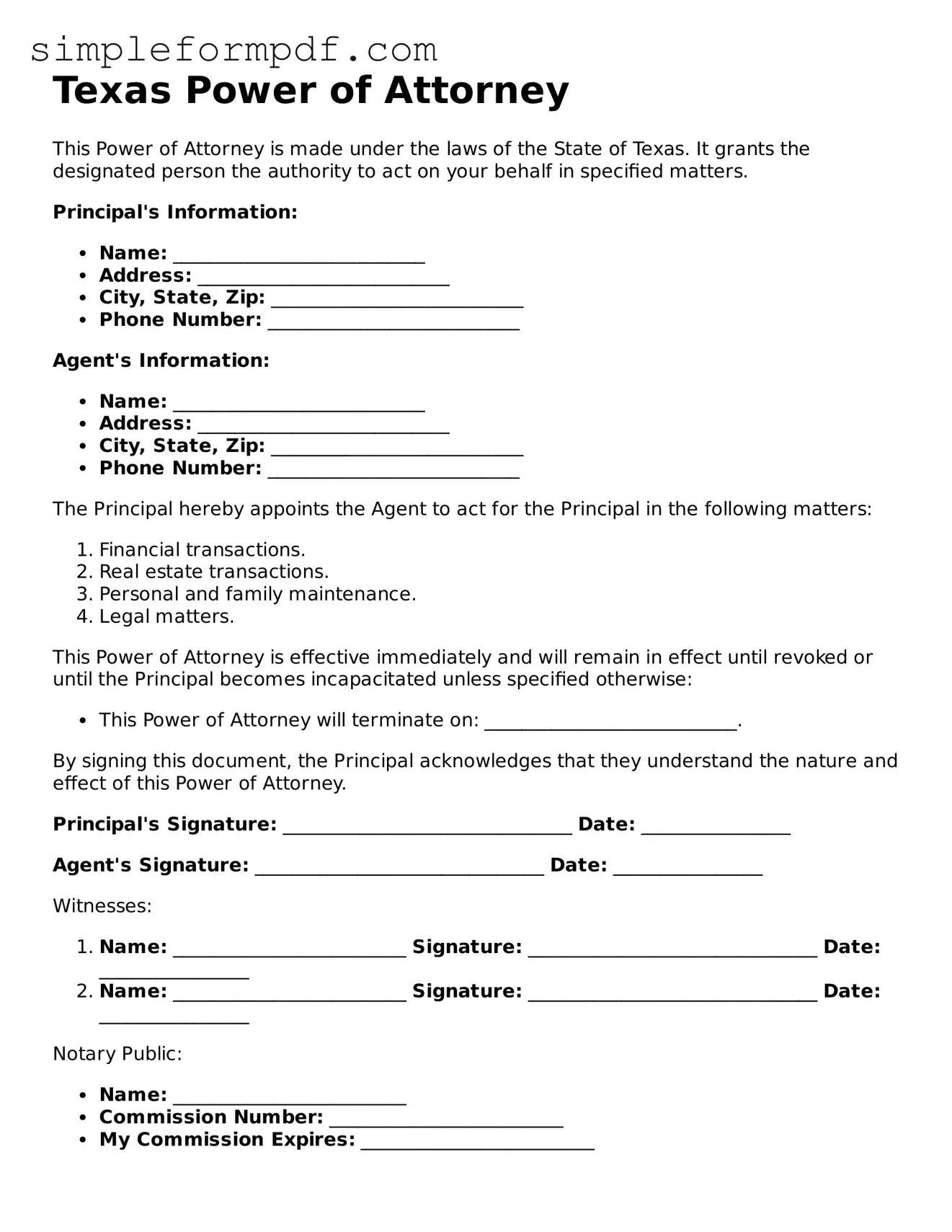Texas Power of Attorney
This Power of Attorney is made under the laws of the State of Texas. It grants the designated person the authority to act on your behalf in specified matters.
Principal's Information:
- Name: ___________________________
- Address: ___________________________
- City, State, Zip: ___________________________
- Phone Number: ___________________________
Agent's Information:
- Name: ___________________________
- Address: ___________________________
- City, State, Zip: ___________________________
- Phone Number: ___________________________
The Principal hereby appoints the Agent to act for the Principal in the following matters:
- Financial transactions.
- Real estate transactions.
- Personal and family maintenance.
- Legal matters.
This Power of Attorney is effective immediately and will remain in effect until revoked or until the Principal becomes incapacitated unless specified otherwise:
- This Power of Attorney will terminate on: ___________________________.
By signing this document, the Principal acknowledges that they understand the nature and effect of this Power of Attorney.
Principal's Signature: _______________________________ Date: ________________
Agent's Signature: _______________________________ Date: ________________
Witnesses:
- Name: _________________________ Signature: _______________________________ Date: ________________
- Name: _________________________ Signature: _______________________________ Date: ________________
Notary Public:
- Name: _________________________
- Commission Number: _________________________
- My Commission Expires: _________________________
